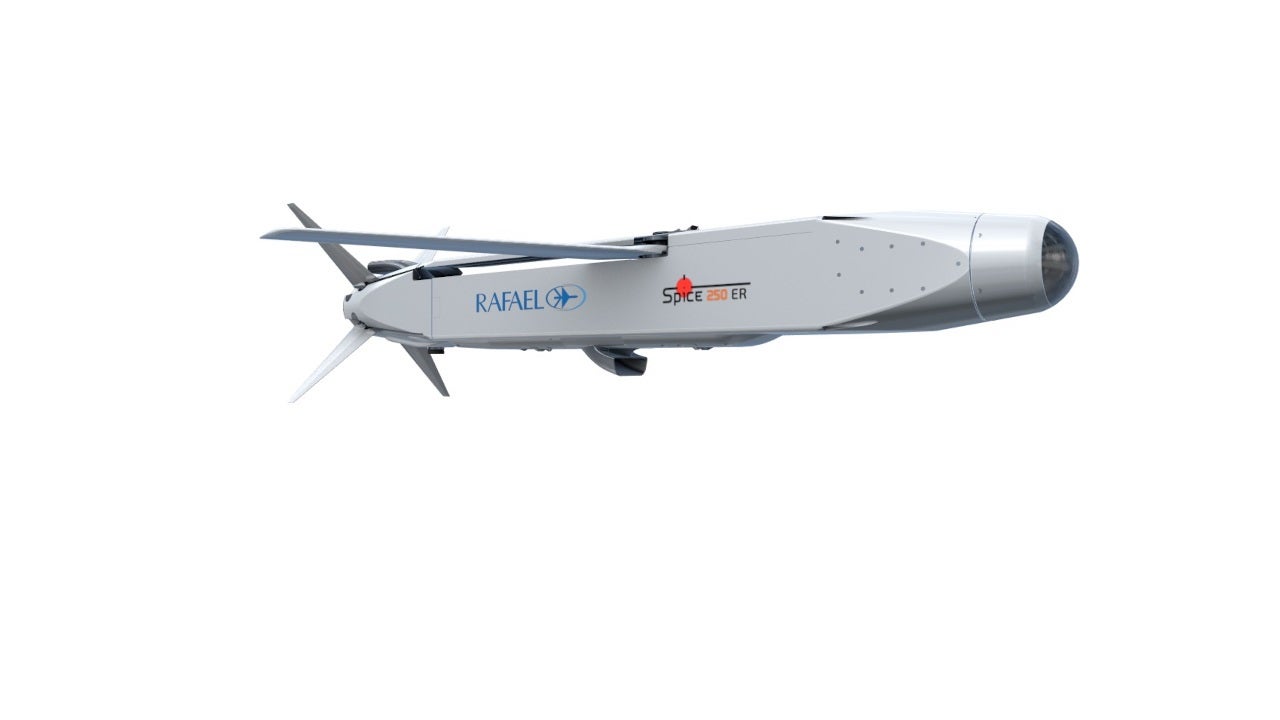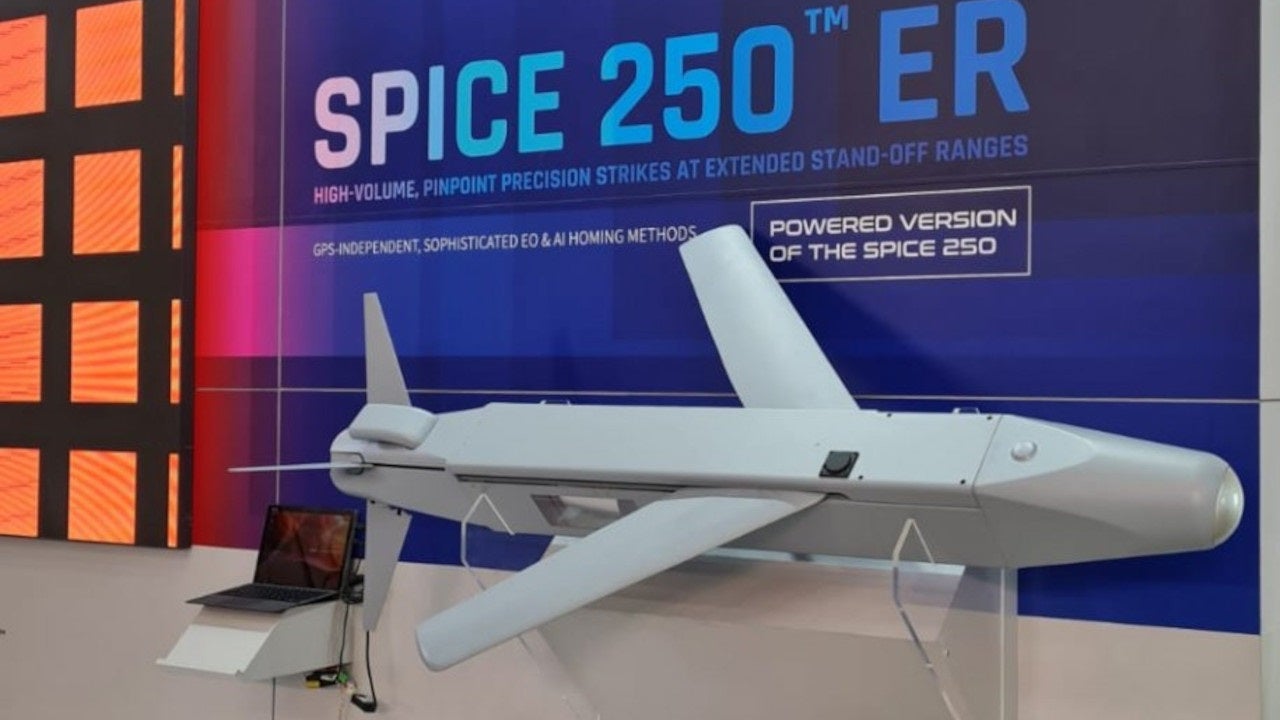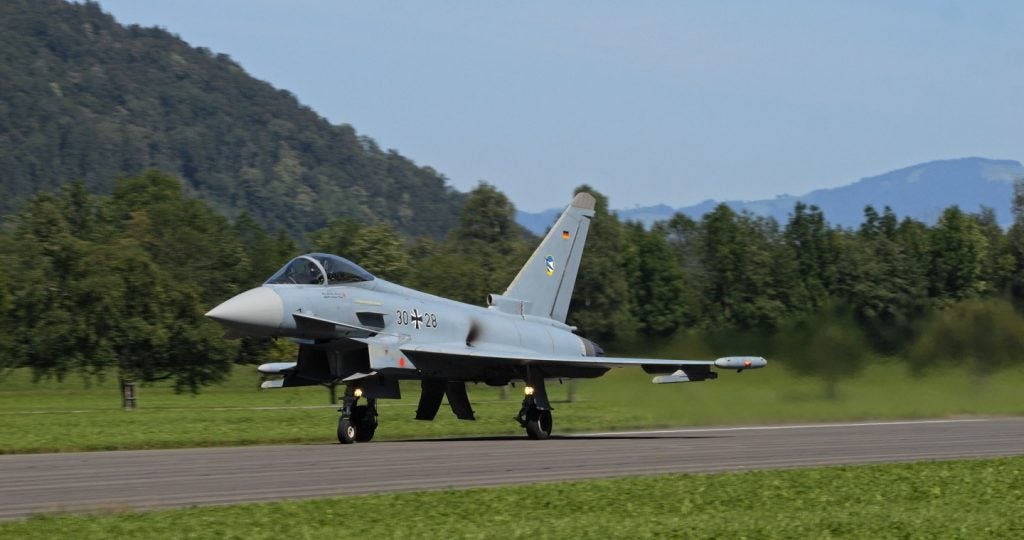Spice 250 is a next-generation air-to-surface precision guided munition manufactured by Rafael Advanced Defense Systems. The weapon belongs to a stand-off, autonomous Spice glide missile family, which includes the Spice 250, Spice 1000 and the Spice 2000.
The combat-proven Spice 250 can hit a range of stationary, relocatable, and moving targets both on land and at sea in GPS-denied environment. It has been operational with the Israeli Air Force and several other nations worldwide since 2003.
In June 2019, Rafael integrated Spice 250 bombs with artificial intelligence along with automatic target recognition (ATR) which can be used with scene-matching technology.
The Spice 250 Extended Range (ER), the latest variant in the Spice family, was unveiled at the Aero India 2021 exhibition held at the Air Force Station, Yelahanka, Bengaluru in February 2021.
Rafael aims to offer the Spice 250 ER variant to the Indian Air Force (IAF), which employed the Spice 2000 weapon during Balakot air strike in 2019.
Design and features of Spice 250 weapon
The small and light-weight Spice 250 weapon can be integrated on both single and dual-seater fighter aircraft using a common aircraft interface and smart quad rack (SQR), which simplifies integration of the weapon onto the aircraft. Each SQR can carry up to four Spice 250 weapons. The Spice 250 can also be directly mounted on light attack aircraft store stations.
The distinct features of the system are autonomous capability, tactical flexibility in trajectory, low collateral damage, simple mission planning and low life cycle cost. It can be operated during day and night, in all weather conditions.
The combination of increased load-out of Spice 250 variants along with extended range allows high volume, autonomous and precision striking capability against multiple target types.
The Spice 250 weapon offers a stand-off range of 100km and stated circular error probable (CEP) of less than 3m.
Warhead and guidance
The Spice 250 guided munition can be fitted with either general purpose blast fragmentation or penetration warhead of 75kg class. The warhead is activated by a pre-set or cockpit-selectable proximity fuse.
Guidance for the weapon system is provided by an enhanced electro-optical/infrared (EO/IR) guidance package. The mid-course inertial navigation system (INS)/global positioning system (GPS) guidance system provides precise mid-course navigation to enhance target acquisition.
The weapon is also equipped with a two-way data-link, which enables communication with the launch platform.
Operation mechanism
The mission to each weapon is allocated by the pilot before its launch. The never-miss operational scenario mission plan for each target is created using target data.
The system can perform mid-course navigation autonomously using INS/GPS upon launch. While approaching the target, the weapon’s unique scene matching algorithm compares the electro-optical image with mission reference data stored in its computer memory.
Spice 250 ER details
The Spice 250 ER variant is based on Spice 250 which is the smallest weapon of the Spice family. The weapon is equipped with a miniature turbo-jet engine and an internal JP-8/10 fuel system, offering a range of 150km.
The extended range variant will retain all the capabilities of the Spice 250 gliding variant, including automatic target recognition (ATR) capability, automatic target acquisition (ATA) and moving-target-detection homing modes.
The ATR feature will allow the weapon to learn the specific target characteristics even before striking by using advanced AI and deep-learning technologies. This feature will also help in overcoming GPS-jamming, navigation and target location errors during the engagement of fixed targets.
Other variants of Spice weapons family
Spice family of stand-off, autonomous, air-to-ground weapon systems can operate without depending on GPS navigation and can attack targets with pinpoint accuracy and at high attack volumes.
The air-to-ground weapon system family includes Spice 250, Spice 1000 and the Spice 2000 guidance kits.
Lockheed Martin and Rafael inked a teaming agreement for the development, marketing and manufacturing of Spice guidance kits for the US armed forces in May 2019. The agreement includes Spice 1000 and Spice 2000 kit variants.
In July 2019, Spice 1000 weapon system received the Israel Defense Prize as it contributed to the security of Israel.









